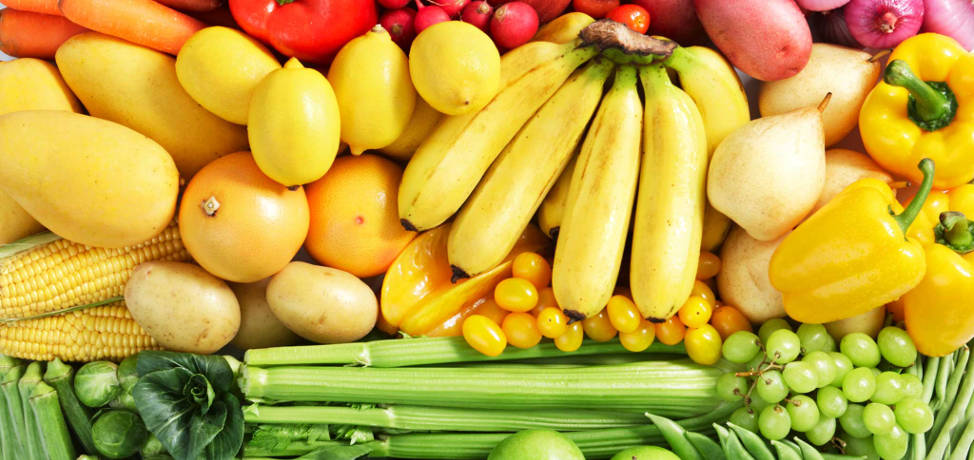Dissociated diets are very popular among the people who want to quickly lose some those extra ponds, but they also have their critics. The main idea of these diets is that foods should not be eaten together, but they should be separated according to some criteria. One of the main attractions of the dissociated diets is that they are not so restrictive when it comes to the quantity you can eat as some other types of diets, but this doesn't mean you have to eat all the time. So we want to show you 3 dissociated diets that are healthy and will help you lose that weight in no time!

The colors diet
We already know that a healthy diet should include many fruits and vegetables. And that's exactly what the colors diet is saying, but, the rule is to eat them according to their colors. Each day of the week is dedicated to a specific color, as follows: Day 1 - white, Day 2 - red, Day 3 - green, Day 4 - orange, Day 5 - purple, Day 6 - yellow, Day 7 - all previous colors .
Let's take them one by one, to understand how this diet works!
Day 1 (white food): bananas, cauliflower, garlic, ginger, mushrooms, onions and potatoes. These foods contain a substance that lowers blood pressure and cholesterol.
Day 2 (red food): red apples, beets, cherries, red grapefruit, red grapes, red peppers, red potatoes, strawberries, tomatoes and watermelon. Red foods contain lycopene, which has the potential to prevent colon cancer.
Day 3 (green food): green apples, avocado, asparagus, broccoli, green bean, cucumber, green grapes, peas, lettuce, limes, green peppers, spinach and zucchini. These foods contain chlorophyll and lutein, two anticancer substances which should not be missing from your diet.
Day 4 and Day 6 (orange and yellow foods): yellow apples, peaches, pumpkin, carrots, lemons, nectarines, mango, oranges, apricots, pears, yellow peppers, pineapple, corn, sweet potato and mandarin. The food in these days is full of carotenoids that maintain ocular health, preventing heart disease and improving the immune system.
Day 5 (purple foods): blackberries, blueberries, plums, eggplant, red grapes, raisins. These foods contain antioxidants and protect you from a wide range of diseases.
Of course, there may be some variation in the menu as long as you take care to keep the main color up to 80%. After the 7 day diet, you'll feel lighter and you will understand how important fruits and vegetables are for your health!

The Montignac diet
One of the most famous dissociated diets is of course the Montignac diet, created by Michel Montignac. This diet is all about the healthy carbs. Normally, the pancreas secretes insulin in response to eating carbohydrates. In some cases, it happens to secrete more insulin than needed. Therefore, the solution found by Montignac was to adopt a diet based on foods with low glycemic index. Measured on a scale from 1 to 100, it tells you how fast and how much a food increases your blood sugar. According to studies, Montignac diet also lowers the triglyceride levels by 35%, which means that it prevents heart disease and liver problems. In addition, this dissociated diet leads to lower insulin levels, resulting in a more efficient metabolism of glucose.
To lose weight, you must consume "good" carbohydrates, like: hummus, spaghetti, whole beans, lentils, light dairy, whole wheat products. In addition, is promoted the consumption of fruits like pears, peaches, grapefruit, apples and oranges. You should avoid white flour products, potatoes, sugar, white pasta, etc. Montignac diet is dissociated because the menu does not allow the association of the carbohydrates with other types of food. You can eat proteins and lipids or carbohydrates and fiber.

The 7 days Hay diet
The rule of this dissociated diet is that you shouldn't combine foods that slow your digestion and cause acidity. Foods are divided into three main groups: acidic, alkaline and neutral. The idea is not to combine acidic foods (like meat) with alkaline foods (like carbohydrates). The diet consists mostly in fruits and vegetables. So why shouldn't you mix proteins and carbohydrates? Well, the first one need an acidic environment to be digested and the second ones an alkaline one. So when consumed in the same time, they will produce to much acidity to digest carbohydrates and too little for the proteins. When the digestion is bad and the nutrients are not being absorbed properly by your body, you may have health problems.





0 comments